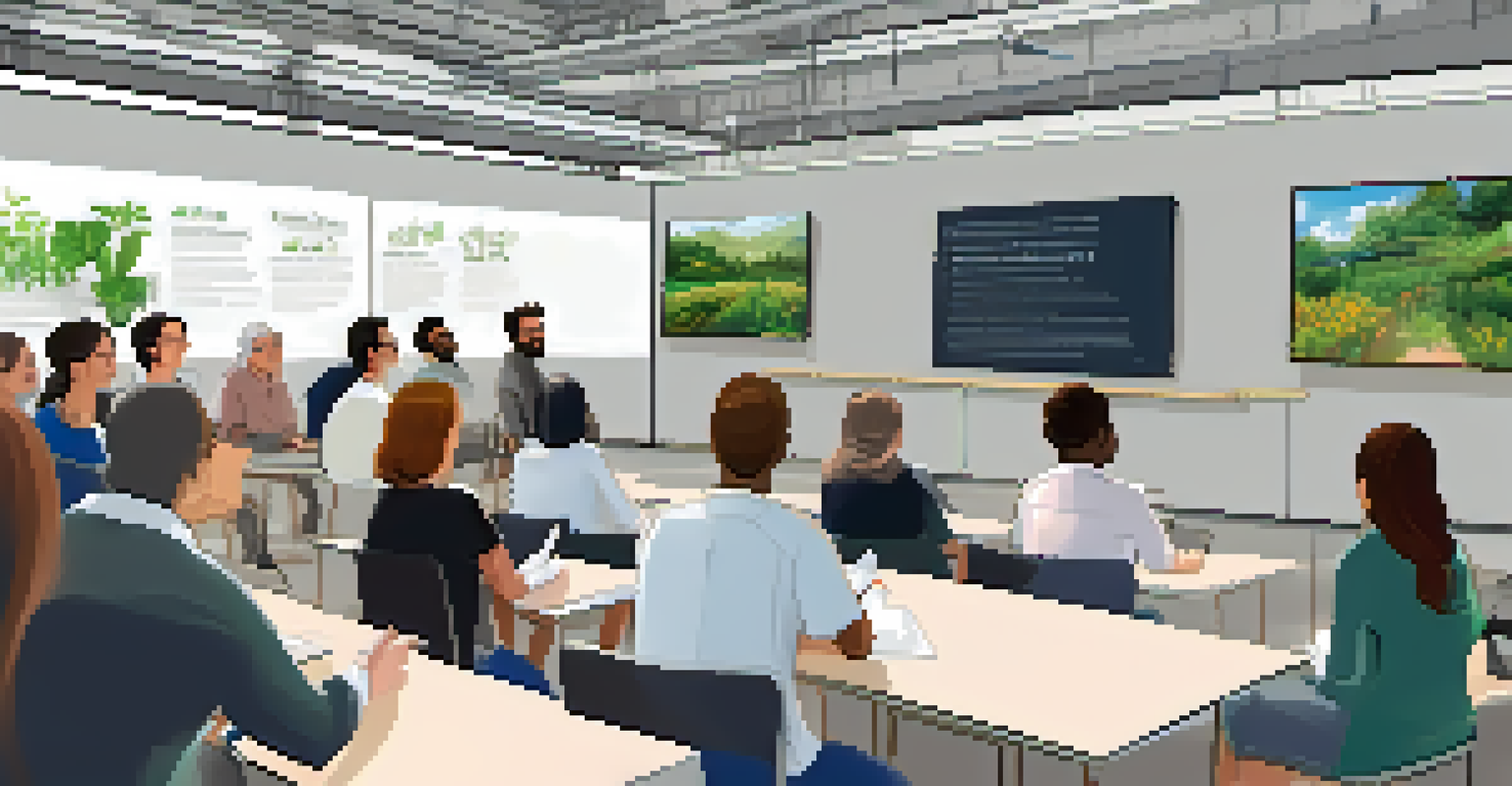Building a Culture of Critical Thinking in Your Workplace

Understanding Critical Thinking and Its Importance
Critical thinking is the ability to analyze information objectively and make reasoned judgments. In the workplace, this skill can lead to better decision-making, innovation, and problem-solving. By encouraging employees to think critically, organizations can create an environment where ideas flourish and improvements are constantly sought.
The ability to think critically is the key to success in any area of life.
Consider this: when a team approaches a project, critical thinking allows them to evaluate different strategies, weigh pros and cons, and predict potential outcomes. This not only enhances the quality of their work but also empowers employees to take ownership of their contributions. Ultimately, a culture that values critical thinking can set a company apart from its competitors.
Moreover, fostering critical thinking skills helps employees become more adaptable in an ever-changing business landscape. As new challenges arise, a workforce trained in critical thinking is better equipped to navigate uncertainties and pivot strategies effectively.
Creating an Open Environment for Discussion
One of the first steps in building a culture of critical thinking is to create an open environment where discussions are encouraged. Employees should feel safe to express their ideas and challenge the status quo without fear of judgment. This openness fosters a sense of belonging and encourages participation from all team members.

Consider holding regular brainstorming sessions where everyone is invited to share their thoughts. This can be as simple as a weekly meeting or a dedicated online forum. The key is to ensure that all voices are heard, which not only sparks creativity but also builds camaraderie among team members.
Encourage Open Discussions
Creating a safe space for employees to share ideas and challenge norms boosts creativity and team engagement.
Additionally, celebrate diverse perspectives and approaches. When employees see that their unique viewpoints are valued, they are more likely to engage in critical thinking and contribute meaningfully to discussions.
Encouraging Questions and Curiosity
Questions are the lifeblood of critical thinking. By encouraging employees to ask questions, you help cultivate a curious mindset that drives exploration and learning. Rather than simply providing answers, leaders should promote an inquiry-based culture where asking 'why' is not only accepted but celebrated.
Critical thinking is the engine of progress; it drives innovation and enhances decision-making.
For instance, instead of saying, 'Here’s how we do this,' consider prompting with, 'What do you think would happen if we approached it this way?' This technique not only invites critical thinking but also encourages team members to reflect on their own processes and assumptions.
Moreover, fostering curiosity can lead to innovative solutions. When employees feel empowered to ask questions, they are more likely to uncover underlying issues and propose creative alternatives, which can be invaluable for the organization.
Providing Training and Resources for Growth
To nurture critical thinking, organizations should invest in training programs that focus on developing these skills. Workshops, seminars, and online courses can provide employees with tools and techniques to enhance their critical thinking abilities. These resources not only equip them with valuable skills but also demonstrate the organization’s commitment to their personal growth.
For example, consider hosting workshops that focus on problem-solving techniques or decision-making frameworks. Such training can empower employees to tackle challenges more effectively and approach tasks with a critical mindset.
Foster Critical Thinking Culture
Encouraging an environment that values critical thinking enhances decision-making and innovation within organizations.
In addition to formal training, providing access to books, articles, and online resources related to critical thinking can encourage continuous learning. By promoting a culture of knowledge-sharing, employees can stay informed and sharpen their skills over time.
Modeling Critical Thinking at Leadership Levels
Leadership plays a crucial role in shaping workplace culture. Leaders who model critical thinking behaviors set the tone for their teams. By openly discussing their thought processes and decision-making rationale, leaders can inspire employees to adopt similar practices.
For instance, when faced with a complex issue, a leader might say, 'Let’s break this down together and explore our options.' This not only demonstrates critical thinking in action but also encourages team members to engage in the same analytical approach.
Moreover, leaders should share their mistakes and what they learned from them. This vulnerability can create an environment where employees feel safe to take risks and think critically, knowing that failure is part of the learning process.
Recognizing and Rewarding Critical Thinking Efforts
To reinforce a culture of critical thinking, it's essential to recognize and reward those who demonstrate these skills. Celebrating individuals or teams who successfully implement critical thinking in their projects can motivate others to follow suit. Recognition can take many forms, from verbal praise in meetings to formal awards.
For example, consider establishing a 'Critical Thinker of the Month' award, where employees are nominated based on their contributions to innovative solutions or insightful discussions. This not only boosts morale but also highlights the importance of critical thinking in the workplace.
Invest in Continuous Learning
Providing training and resources empowers employees to develop their critical thinking skills and adapt to new challenges.
Furthermore, sharing success stories can serve as inspiration for others. Highlighting how critical thinking led to meaningful outcomes encourages a mindset of inquiry and innovation among all employees.
Evaluating and Evolving Your Critical Thinking Culture
Building a culture of critical thinking is not a one-time effort; it requires ongoing evaluation and adjustment. Periodically assess how well critical thinking is integrated into your workplace. Gather feedback from employees about their experiences and perceptions regarding critical thinking practices.
Consider conducting surveys or focus groups to gain insights into the effectiveness of your initiatives. This feedback can help identify strengths and areas for improvement, ensuring that your approach remains relevant and impactful.

As your organization grows and evolves, so should your strategies for fostering critical thinking. Stay open to new ideas and be willing to adapt your methods to cultivate a dynamic culture where critical thinking thrives.